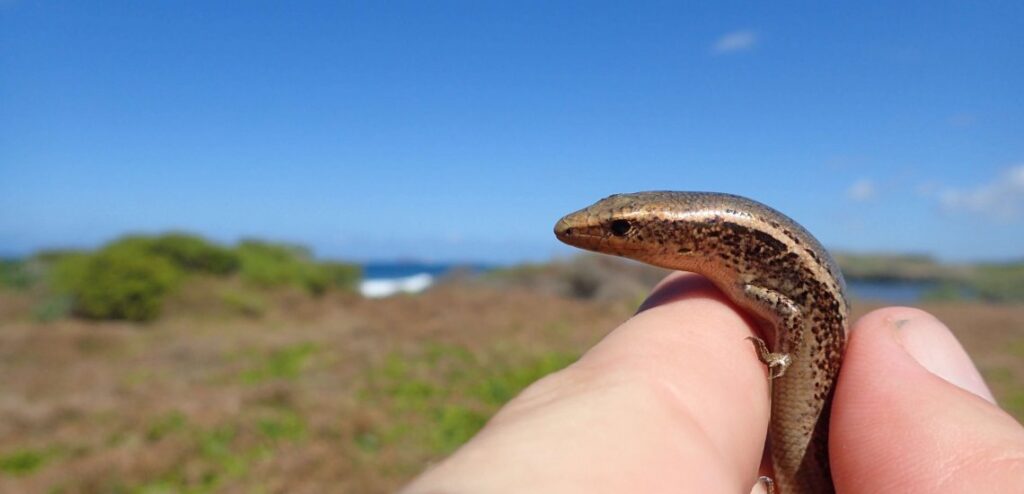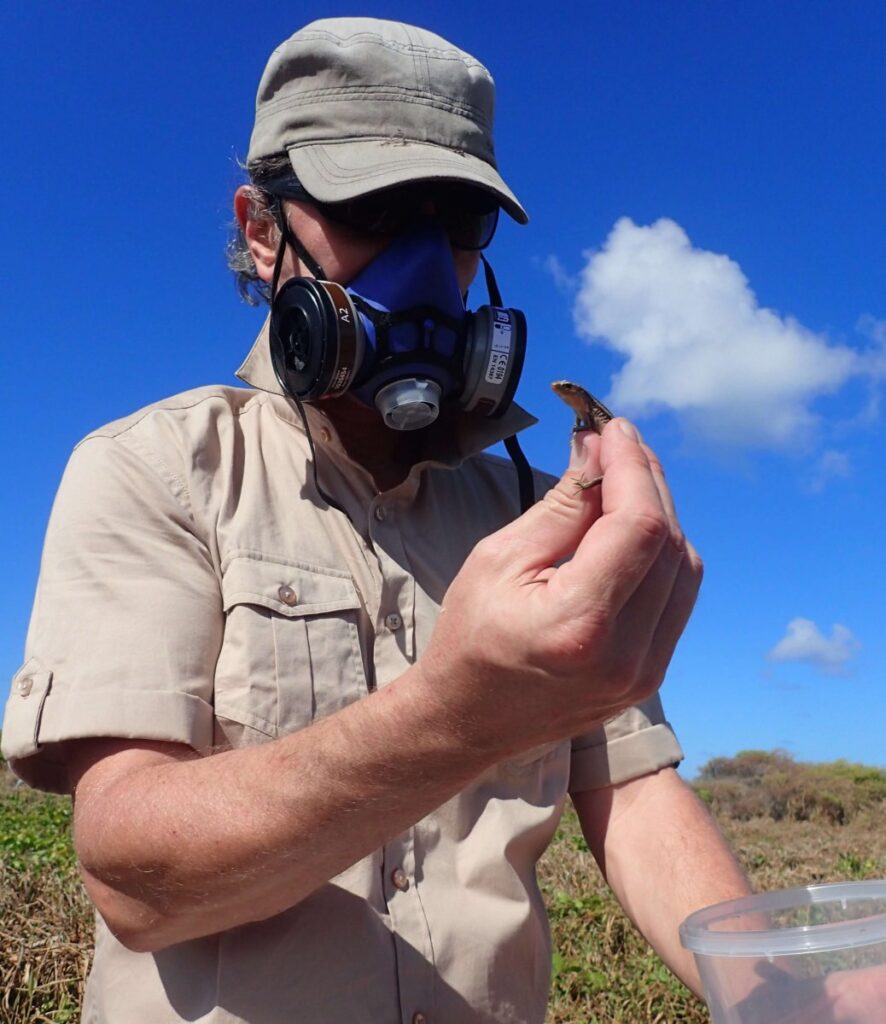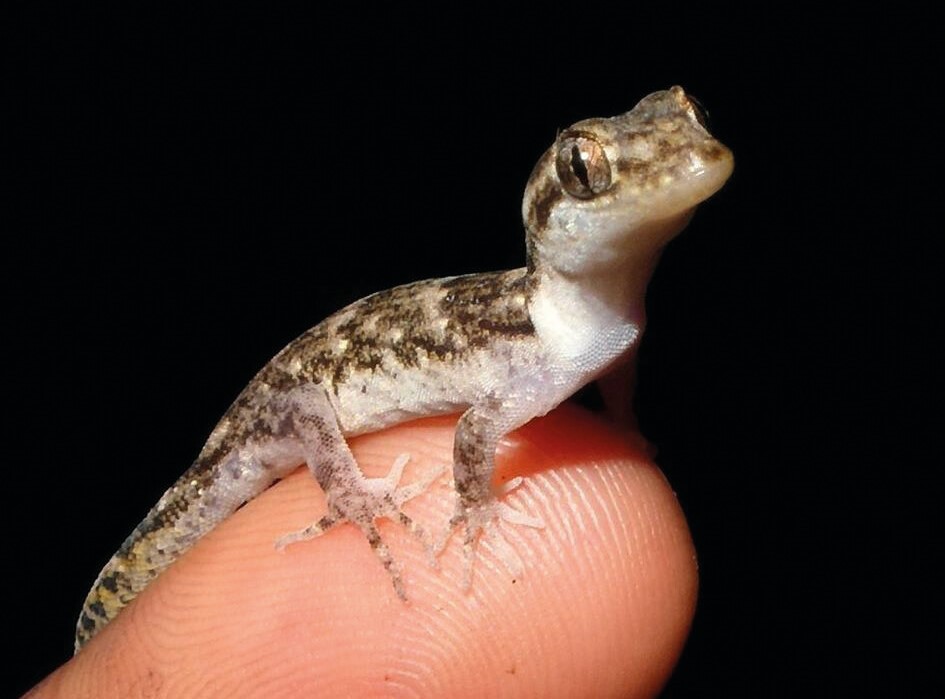Reptile rescue mission after devastating Mauritius oil spill

When an oil freighter ran aground within a few kilometres of Mauritian nature reserves, local conservationists rushed in to rescue three globally threatened lizard species found nowhere else. The reptiles were moved to a captive breeding programme that could provide a vital lifeline.
By Jessica Law
Skinks come across as pretty tough lizards. With short, stocky legs and no neck to speak of, they wedge themselves into burrows and cracks that are hard to penetrate. If a predator does manage to extricate them, they will simply shed their tail, leaving it wriggling in the unsuspecting carnivore’s mouth, before calmly growing a new one. Skink-like lizards first appear in the fossil record about 140 million years ago, around the same time as the Tyrannosaurus Rex – so they must be doing something right. But there are some dangers even a skink can’t wriggle its way out of. When the MV Wakashio freighter ran aground on the 25th of July, leaking 1000 tons of fuel into nearby nature reserves and national parks, a manmade problem needed a manmade solution.
Bojer’s Skink, Bouton’s Skink and the Lesser Night Gecko can only be found on a handful of islands in southeast Mauritius. Obliterated elsewhere by invasive species and habitat loss, only a few hundred are left alive. Since oil pollutants are extremely toxic to lizards, the recent disaster could have driven them to extinction, if it hadn’t been for the fast and decisive rescue mission organised by the Mauritian Wildlife Foundation (MWF – BirdLife Partner) and the Durrell Wildlife Conservation Trust, assisted by BirdLife, the National Parks and Conservation Service of Mauritius and the Forestry Service. Scientists evacuated 30 Bojer’s Skinks, six Bouton’s Skinks and 30 Lesser Night Geckos to mainland Mauritius. In September, they were airlifted out to Jersey Zoo‘s world-renowned reptile breeding facility.
“This rescue is our chance to save these unique Mauritian species and secure a lasting gene-pool, so that they can be re-introduced one day,” says Dr Vikash Tatayah, MWF Conservation Director.

Dr Nik Cole, Islands Restoration Manager for the Durrell Foundation, explains why Jersey Zoo in the Channel Islands was the only choice for the lizards, despite its distance from Mauritius. “Jersey Zoo… has over 40 years’ experience maintaining Mauritian reptile populations in captivity and has world-class herpetological and veterinary expertise. This is their only chance of survival as the facilities to maintain these reptiles and keep them safe from predators, foreign parasites and disease, long-term, are not currently available in Mauritius. Two of these species have never been held in captivity before, which highlights the expert care required for these animals.”
Even though less than 5% of the lizard’s populations were captured, they act as an important reserve in case wild populations suffer severe losses from the oil spill, or even go extinct. The lizards will be bred in captivity in the hope that their offspring or grandchildren can be released to replenish wild populations once the oil toxins have broken down.
As an island nation, Mauritius is famed for its unusual and unique wildlife, which evolved independently over millions of years of isolation. As well as the intrinsic value of this wildlife, the tourism revenue generated by Mauritius’ fascinating fauna is one of the principal sources of income for the country. Preserving genetic diversity, even within a single species, is extremely important in order to maintain healthy levels of variation and avoid inbreeding.

Bojer’s Skink is one of the most genetically distinctive skinks in the world. It is the only species in its genus, and diverged from its closest relatives 30 million years ago (in comparison, humans did so less than 7 million years ago). An omnivore that eats both insects and fruit, it plays a vital role in the ecosystem by keeping down insect levels and dispersing seeds in its droppings. Whole areas of forest may not have regenerated had it not been for this fruit-loving roamer. Bouton’s Skink prefers coastal areas, where it chows down on marine crustaceans and insects. This lizard has radiated into a huge variety of different sub-species spread out across the different islands, all of which are important to preserve.
And then we come to the Lesser Night Gecko, a completely different kind of lizard. While possessing the bulging, lidless eyes and adhesive toe pads common to most geckos, one thing that sets it out from the crowd is its absolutely miniscule size. This Lilliputian reptile grows to only 6cm in length (including the tail) and lay eggs weighing just 0.2 grams. While not quite being able to dance on the head of a pin, the lizard can comfortably sit atop the average fingertip. This adaptation could have come about as a result of island dwarfism – the process by which species on isolated islands become smaller and smaller due to limited space and food supplies. There is still so much to discover about these wonderful creatures.
“It shows what we can all achieve, in spite of circumstances, to safeguard the precious natural environment by collaborative effort between conservationists, government and supporters,” says Particia Zurita, CEO of BirdLife International.
The reptile rescue was made possible with the support of the Jean Boulle Group, whose generous and timely backing enabled the lizards to be transported to Jersey Zoo. Their involvement further builds upon their history of conservation in Mauritius and worldwide. The first Jean Boulle Group conservation project with MWF supported restoration of the wild Mauritius Kestrel population at the property now known as “Kestrel Valley”. Today the Jean Boulle group is a strong supporter of conservation and anti-marine pollution initiatives. Specifically, it has worked alongside experts on reptiles in the 19 islands of the Saint Brandon archipelago and with MWF, ECOSUD and BirdLife International towards conservation and Eco-awareness in Mauritius.
The Jean Boulle Group has also been actively involved in supporting wildlife and with sustainability programs in a number of other territories beyond Mauritius including: education in conservation and replanting in Madagascar, anti-poaching initiatives in Zambia, support with BirdLife’s work on Important Biodiversity Areas, the conservation of the critically endangered albatross and extensive participation in the South Georgia Heritage Trust’s island invasive species program. A Founder Patron since 2007, Nathalie Boulle was honoured to receive the BirdLife President’s Medal in 2013 from HIH Princess Takamado of Japan in gratitude for many years of service to conservation. jeanboullegroup.com


